U.S. automakers and Oil industry’s guarded high fuel mileage secret.
Getting Off Oil, World news Saturday, July 6th, 2013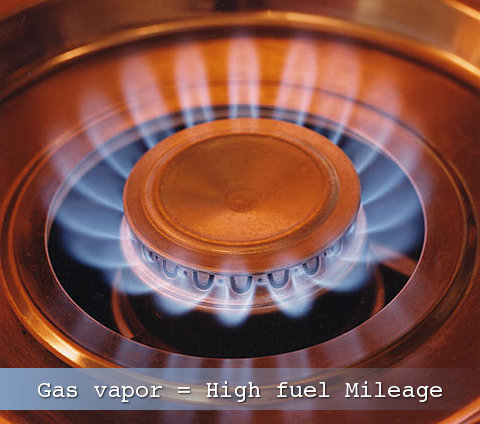
A guarded secret that is worth its weight in gold
“Gasoline in the liquid form does not even burn, much less, explode. Only the vapor that comes from the gasoline will burn. Therefore, to mix raw gasoline with air, and attempt to explode it in an internal combustion engine is a very wasteful, costly, and polluting practice. It also shortens the life of the engine and exhaust system.” ~ Popular Science, December 1957 Canadian inventor, Charles Nelson Pogue knew this fact long before that magazine article was written and developed and patented a carburetor that vaporized gasoline, thus dramatically increasing the fuel mileage per gallon of gasoline used. In 1933 Charles Nelson Pogue made headlines when he drove a 1932 Ford V8, 200 miles on a gallon of gas (mpg) during a demonstration conducted by The Ford Motor Companies in Winnipeg, Manitoba using his super-carb system.
United States Patent # 750354 http://www.freepaten … 354&stemming=on (Download .pdf 1750354 ) In fact, many people attested to these mileage claims as The Pogue Carb went into production and was sold openly. However, one of the crucial factors of these systems is the use of “white” gasoline, which contained no additives. It was at this time oil companies started adding lead to the fuel. Lead is an anti-catalyst that rendered Pogue’s carburetor as inefficient as a regular carb. Today lead fuel is gone and high fuel mileage is once again achievable.
Pogue’s invention caused such shock waves through the stock market, that the US and Canadian governments both stepped in and applied pressure to stifle him. He suffered an enormous amount of loss as a result of trying to make the world a better place.
Mr. Pogue’s vaporizer brought him in contact with a lot of people who didn’t want what he was offering to get out. He received many accolades, and was accused by others as being a fraud. Lead was intentionally added to gasoline to prevent anyone else from building such a device, since lead leaves heavy deposits and clogs these types of units, rendering them ineffective due to the inability to transfer heat to the fuel.
Pogue wasn’t the only one to substantially increase the fuel efficiency of the gas combustion engine. Tom Ogle of El Paso Texas , a 24 year old mechanic drove 200 miles in a 1970 351 ci. Ford on 2 gallons of gas (100 mpg) . Other mechanics and engineers checked for hidden tanks, none were found. Reporters and a camera crew went with him 100 miles out and back; 200 miles on 2 gallons. He claimed from the beginning that he did not know exactly how the system worked, just that it did and he proved it time and again. He had hoped other engineers would help to explain what he was doing. He had a hard time getting backers that had integrity. Everybody wanted controlling interest and he knew it was going on the back shelf. Tom resisted and tried to get it on the market. Later he was shot and survived, only four months later he did die of an overdose of darvon and alcohol with no suicide note. Nobody explained what became of his idea. A patent was issued Dec. 11, 1979 # 4,177,779 – Four months after his death.

United States Patent 4177779 http://www.freepaten … ine.com/4177779.html
Patent Abstract – A fuel economy system for an internal combustion engine which, when installed in a motor vehicle, obviates the need for a conventional carburetor, fuel pump and gasoline tank. The system operates by using the engine vacuum to draw fuel vapors from a vapor tank through a vapor conduit to a vapor equalizer which is positioned directly over the intake manifold of the engine. The vapor tank is constructed of heavy duty steel or the like to withstand the large vacuum pressure and includes an air inlet valve coupled for control to the accelerator pedal. The vapor equalizer ensures distribution of the correct mixture of air and vapor to the cylinders of the engine for combustion, and also includes its own air inlet valve coupled for control to the accelerator pedal. The system utilizes vapor-retarding filters in the vapor conduit, vapor tank and vapor equalizer to deliver the correct vapor/air mixture for proper operation. The vapor tank and fuel contained therein are heated by running the engine coolant through a conduit within the tank. Due to the extremely lean fuel mixtures used by the present invention, gas mileage in excess of one hundred miles per gallon may be achieved.

Pogue Carburetor – A press report from that time read as follows:
Double-Mixing Carburetor Increases Power and Mileage
A NEW carburetor that makes mileage of 200 miles per gallon a possibility has been invented by a Winnipeg, Can., engineer. It has been tested and examined by several automotive engineers who claim it is entirely feasible in its action.
C.N. Pogue, the inventor, supplies his carburetor with two mixing chambers instead of one. The gasoline is vaporized in the primary chamber and before being used is sent through another mixing chamber. Here, since it is vapor that burns and not liquid gasoline, the gasoline is further vaporized into a still finer mixture. This insures more power and mileage from usual quantity of liquid gasoline.
The main factors that affect gasoline ignition is Air fuel mixture. Air fuel mixture must be between a 7:1 and 20:1 ratio to ignite properly. When the engine is cold it may be hard to obtain even the leanest ratio because the fuel may not vaporize sufficiently. This ratio is increased by the use of a choke (or now a fuel injector system). A choke literally chokes the engine of fuel – cuts off flow to the bare minimal until the engine reaches operating temperature. Once the engine is warm enough you would disengage the choke to allow normal fuel flow. The temperature definitely has a great affect on ignition. At lower temperatures, less evaporation, therefore smaller surface area then gasoline in a vapor form.
Gasoline in a vapor form is better because it has a larger surface area for the reaction (combustion) to take place. Temperature has a profound affect on the carb jetting because of the changes in air density. When the air density increases, you will need to richen (add more fuel) to the air-fuel mixture to compensate. When the air density decreases, you will need to lean-out (reduce the fuel intake) the air-fuel mixture to compensate.
Factor that Affect Air Density is air temperature. As the air temperature increases the air density becomes lower. This will make the air-fuel mixture richer (more fuel consumed). When the pressure decreases, the opposite effect occurs – less fuel consumed.
The concept of gasoline vapor induction goes back at least as far as 1915 with patents illustrating how gasoline in a gaseous state is explosive, hence dynamic. Gasoline in a liquid state must be converted to a gas before burning can take place; it’s the rapid burning that causes the air and fuel mixture to expand, hence a downward force during the power (down stroke) stroke of a piston in a reciprocating engine.
Since vaporization occurs for the burning process to conclude, Gasoline Vapor Induction (also referred to as GVI) simply pre-stages the gasoline to release the hydrocarbon in a gas form early on in the process. This phase change allows the hydrocarbon to release its energy dynamically (like a stick of dynamite) versus thermally (like a corked tea kettle as it starts to boil).
Atmospheric pressure abounds on planet Earth, and that is a large factor in determining the state of matter in our troposphere. In order to boil a liquid (convert from a liquid to a gas) the atmospheric pressure must be overcome. One common way to do this is to add heat (increase the average ambient kinetic energy per cubic inch) until the molecules are excited enough to break free from the meniscus of the liquid. This is a high-energy mechanism to accomplish a natural phase change in matter.
A low-energy solution was discovered by inventor George Talbert in the 1960’s; remove the atmospheric pressure and the compound (when possible) converts to a gas in favor of its’ self-defining properties. Gasoline is abundant with such compounds; hence it releases the hydrocarbons in gaseous form readily at less than one atmosphere.
George Talbert’s Fuel vaporizing system on a 1981 Oldsmobile.
The first step in the process is to capture fuel in a liquid state from the fuel pump. This is accomplished with a fuel filter containing two output fuel line connections. Connected immediately after the fuel line filter/splitter, is a fuel line connected to a vaporization canister.
This particular vaporization canister was made from an exhaust pipe reducer/coupler. The reducer has a float connected to the incoming fuel line. The float allows the canister to only fill to the one-half-way point with liquid fuel, and then the float closes the fuel supply to the canister. The exhaust pipe reducer/coupler is sealed at both ends with metal disks that are welded on each end to create an atmosphere resistant container. The top of the canister has a small (1/32 of one inch inner diameter) copper line that protrudes through it; it is also sealed from atmosphere, by a solder joint.
The copper line is snuggly connected to a vapor line, and the other end of the vapor line is connected to a spacer plate that is below the base plate of the existing carburetor, which was installed at the factory in 1981. The carburetor was modified by removing the fuel rods during a rebuild, and the jets were soldered shut. No fuel passes through the carburetor as the fuel line to the carburetor was removed and sealed with a bolt and hose clamp.
In the spacer plate at the top of the intake manifold is an infuser. There is nothing special about the infuser, it is a fuel rod made of copper with dozens of tiny holes drilled throughout its’ length. The copper fuel rod is inside of a metal outer rod that is spaced 1/32 of inch around the fuel rod, covering the fuel rods’ entire length. The metal tube that encases the fuel rod has small holes drilled at 45 degrees and 90 degrees.
When the piston travels its’ down stroke path into the cylinder of the engine block, a vacuum it created. That vacuum is transferred (via the vapor line mentioned earlier) to the vaporization canister. Inside the canister the atmospheric pressure is reduced causing the fuel to convert to a very fine atomized mist. That mist is carried via the vacuum line to a flow control valve (used to meter the amount of vaporized fuel particles available to the infuser) and then to the infuser at the base of the carburetor. Above the infuser is a throttle plate and below the infuser is a throttle plate. The plates are comprised of butterfly cover plates connected to the throttle linkage and a return spring. A common linkage to keep them synchronized connects all the throttle plates.
When the gasoline fog (fine mist) reaches the infuser, heat and airflow come into play. It has been noted that more humid atmospheric conditions create a smoother operating engine. The gasoline fog converts into a gaseous hydrocarbon in the hot infuser and mixes with the incoming air. The air fuel mixture is drawn into the cylinder and an explosion occurs thus driving the piston downward by concussion, versus rapid thermal expansion; and an economy of force per cubic inch of fuel expended is achieved. The isometric mixture seems to remain near fifteen parts air to one part fuel, but a more powerful explosive force precedes a turbulent concussive shockwave driving the piston. Due to the more volatile state of the air fuel mixture, the timing was set to 4 degrees before top dead center versus the factory setting of 18 degrees after top dead center. The spark advance is currently not in use due to the disconnection of the accelerator pump.
Originally the accelerator pump was to be used (as illustrated in the drawing) but the decision to bypass it was finalized during construction of the actual working model. The flow control is manually set for optimal performance during each operating cycle of the engine. Temperature and humidity do effect the operation of the engine; the vapor flow can be altered via setting the valve to more opened, or more closed to smooth out the operation of the engine. By setting the flow control valve, acceleration can be achieved while bypassing the accelerator pump.
It was proven possible in 1933, that gas combustion engines can get a fuel efficiency of 200 mpg. Lead was added to drastically lower the fuel efficiency. Even with lead added it was proven possible to get a fuel efficiency of 100 mpg in 1970. Then three years later in 1973 a souped-down 1959 Opel T-1 achieved 376.59 miles per gallon (376 mpg) . Featured in the Guinness Book of World Records. Using fully stock production gasoline engine powered vehicles, with engine modifications limited only to changes in fuel mixture and ignition timing, Shell Oil Company served host to an open competition in automobile efficiency. The fruit of their forum was sweet indeed as a two-door, full-sized production car was able to drive off with the prize by achieving 376.59 miles in normal driving conditions using a single gallon of fuel. A more heavily modified vehicle was able to achieve over 1140 miles on a single gallon of fuel. Results like these are truly astounding and beg the question: Are we really getting all we can in efficiency from auto makers?
So why are we only getting a maximum of just 50 mpg today? Because of this –

Greater fuel efficiency has been controlled since the introduction of the fuel injection engines and the ECM (engine control module). The Engine Control Unit or ECU is a designated computer that was developed to manage the engine control system. The ECM consists of electronics which are mounted on a multi-layer circuit board. The ECM monitors and adjusts the air/fuel mixture and utilizes a catalytic converter to minimize the amount of pollution produced from the engine. There are two modes of operation, closed loop, which means the computer has completely taking over the operation system. And open loop which is used when the engine is cold and operates on a preset program. The engine must be at operating temperature before it can go into closed loop.
The ECM monitors the input and output signals produced by various sensors in the system. The ECM then adjusts the system as necessary. Sensors include: O2 (oxygen) sensor, coolant sensor, mass air flow sensor, air intake sensor, crankshaft angle sensor, throttle position sensor, camshaft angle sensor and knock sensor. The ECM operating program consists of information cells. These cells hold the code for controlled engine operation.
The ECM outputs a 5 volt reference to most sensors to regulate the monitoring circuits. The ECM also controls the radiator cooling fan, air pump controls, fuel pump, EVAP system and more depending on the vehicle. The main purpose of the ECM is to control the vehicle’s air/ fuel mixture, to maintain a factory set air to fuel mixture ratio so that the vehicle fuel consumption is controlled to low fuel efficiency standards. The car makers have controlled the fuel efficiency of their vehicles by setting the air/fuel mixture ratio to a constant 14.7 : 1.
All modern vehicles have O2 sensors. The O2 sensor produces its own voltage, which makes it a type of generator. The generated varying voltage shows up on the scope as the familiar 1 Hz sine wave, when in closed loop (engine is at operating temperature). The actual voltage that is generated is the difference between the O2 content of the exhaust and that of the surrounding ambient air. The stoichiometric air-fuel ratio or the mixture of air-to-fuel is programmed by the vehicle manufacturer to equal to 14.7:1. The car manufacturers state that at this ratio the engine combustion process happens with the most power being generated and the least amount of emissions being produced. At a stoichiometric air-fuel ratio (14.7:1), the generated O2 sensor voltage is preset to about 450 mV. The Engine Control Module (ECM) is programmed to view a value above the 450 mV as a rich condition, and a lean condition below it. The ECM adjusts the fuel injector pulse width to achieve the factory set mixture, as determined by the O2 sensor. When the O2 gets too RICH, it will always and automatically decrease the injector pulse width allowing less fuel to be injected into the engine, if it gets too LEAN, it’s always and automatically increase the amount of fuel injected in the engine.
The vehicle’s Air mass meters, controlled by the ECM, also determines how much fuel is or isn’t used in the combustion. A set electric signal is applied to a special alloy wire that is suspended in the middle of the air flow to the engine and depending upon how much air passes across that wire, it presents an impedence to the flow of the signal and the ECM then uses this signal to determine how much fuel is required to meet the 14.7:7 air to fuel mixture ratio.
In both cases a voltage controls the air to fuel mixture so that it will always be a constant – 14.7:1 or very low fuel efficiency. The secret to greater fuel efficiency is to change the voltage so that the vehicle runs leaner – leaner meaning less fuel is being used. Even a slight adjustment to the voltage will result in much better fuel efficiency. The trick is to adjust the voltage by reducing the voltage just enough as to not reduce the fuel flow to such extremes as to starve the engine for fuel. There are many ways to quickly and cheaply reduce the voltage output to the vehicle’s O2 sensors and Air mass meter.
Another secret to increased fuel efficiency is to bypass the vehicle’s air mass metering. Air bypass lets unmetered air into the intake manifold. The computer does not “know” about this air and thus does not match it with its preset air fuel mixture ration. The more air you allow to bypass, the less fuel will be automatically injected by the ECM to meet the 14.7:1 low fuel efficiency protocols. Bypassing the air mass metering system rather than reducing the air flow before the air mass metering system will insure that the engine receives more air than required for a good combustion. If you were to restrict the air flow before the air mass metering system your vehicle would lose performance. If you can cram more air into a cylinder of a given size, you can get more power from the cylinder (in the same way that you would by increasing the size of the cylinder). Turbochargers and superchargers pressurize the incoming air to effectively cram more air into a cylinder.
Auto makers lobbied the government to make it mandatory for all vehicle operating on Canadian and US roads to be equipped with an ECM, O2 sensors and air mass metering systems so that they can control the fuel efficiency of their vehicles. They sold this electronic control system to the government as an emission control system. They said it would control the air fuel mixture ratio to lower carbon emissions. In reality it was set up to guarantee a greater demand for fuel and therefore fuel our dependency on oil. For decades we have been forced to buy vehicles that are very fuel inefficient. Just by changing the factory set air fuel mixture ratio we can be driving more fuel efficient vehicles, not by 2020, but as early as tomorrow.
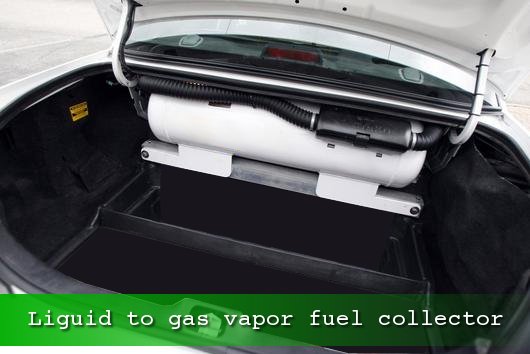
The indisputable proof that all gasoline combustion engines run more efficiently on a gas vapor is demonstrated every day by vehicles that run on propane or natural gas. You can convert any gas guzzling vehicle into a high mileage vehicle simply by running it on gasoline vapor. How many taxi companies Worldwide have converted their gasoline vehicles to run on the cheaper and environmentally friendlier propane or natural gas? Taxis throughout the US and Canada have kept the stock gasoline combustion engine but have modified them to run on propane or natural gas.
Propane and natural gas have been used as a commercial motor fuel for more than 80 years and billions of miles. Propane and natural gas powered engines offer cleaner emissions along with 10 to 15 percent less carbon dioxide, 20 percent less carbon monoxide and 50 to 60 percent less hydrocarbons and nitric oxide.
Most carburetor and fuel-injected engines have easily been modified to operate on propane or natural gas simply by installing a conversion kit. Propane and natural gas (vapor) vehicles produce minimal sooting, owing to its low carbon content, which means increased engine life, fewer oil changes and longer spark plug life.
Don’t be discouraged by claims that if you run you engine on only gas vapor or a leaner (less fuel more air) fuel mixture you’ll kill your engine. Propane and natural gas are the leanest types of fuel (they are both gas vapors) yet they have been used for over 80 years and they have caused no damage to the engine. They have actually extended the life of the engine. I have personally seen propane powered taxi cabs with over a million kilometers on their odometer.
Damage to an engine is caused by overheating (faulty coolant system), lack of oil, and carbon buildup (engine sludge) in the engine from using liquid carbon fuels like gasoline and diesel. All gas vapor powered engine run cooler and cleaner than any liquid fuel feed engine. All gas vapor powered engines can travel a lot further than liquid fueled engines as Charles Nelson Pogue proved 80 years ago. Pogue’s gas vapor carburetor allowed a Ford V-8 Coupe to travel 800% farther than its stock liquid fueled counterpart.
Even the US government knows that gas vapor and not liquid fuel is what runs all internal combustion engines. FEMA – “All internal combustion engines actually run on vapor, not liquid. The liquid fuels used by gasoline engines are vaporized before they enter the combustion chamber above the pistons.” This claim was stated in the following FEMA (Federal Emergency Management Agency) document – www.woodgas.net/files/FEMA_emergency_gassifer.pdf This report was published in 1989.
So, if millions of vehicles Worldwide are already running on propane and natural gas, it is safe to say that all liquid gasoline combustion engines can run on propane, natural gas or just the gasoline vapor. It is a lot cheaper to modify the existing liquid gasoline tank and produce gas vapor than to buy and install a propane or natural gas conversion kit.
How to convert your gas guzzler into a high mileage gas vapor vehicle
If you have the auto mechanical skill or know-how you could easily modify any existing liquid gasoline fuel system and make it into a liquid fuel to gas vapor system. You don’t need to drill or cut into your existing liquid gasoline tank at all.
A simple gas vapor fuel system works by vacuuming the gas vapor from the top of the liquid gasoline tank, through the flexible fuel line between the gas tank and an installed air tank in the trunk, into and from the air tank and along the preexisting fuel sending line to the engine.
You could use a mass produced air compressor type tank or commercial truck air brake tank or a propane conversion type fuel tank as the gas vapor collector and reserve tank. All are already made to withstand very high air (which is also a gas) pressures and the tank will act like a reserve tank when the engine is off. This way you will always have a good supply of gas vapor to draw upon.
In today’s cars the fuel is constantly circulating from the tank, through the system and back to the tank. The fuel does not stay still long enough to get hot enough for it to begin to vaporize. This is the whole purpose of the return fuel line. It is preventing the fuel from vaporizing and it is preventing much higher fuel mileage. Since all new cars have these return fuel lines you can take advantage of it and produce high mileage fuel vapor. The returned fuel from the engine is always warmer than the fuel supply line. Heat aids in the vaporization (gasification) of the liquid fuel. The more you vaporize (gasify) the liquid fuel the greater the fuel mileage. Instead of cold air being injected into the gas tank and producing cold air bubbles the return fuel line can be used to inject a much warmer air/fuel gaseous mixture and produce warm air/fuel gaseous bubbles. What was purposely manufactured into all new cars to keep fuel efficiency low can be used to actually increase fuel efficiency.

Fuel line induction coil by Paul W Kincaid
Heat can also be used to break down the smaller gasoline molecules into high mileage gas vapor. Oil refineries use heat and pressure to “crack” heavy hydrocarbon molecules into lighter ones. This process is called Catalytic Cracking: breaking down the large molecules of heavy crude oil into smaller gasoline molecules. Heating the fuel causes the liquid to expand and convert into a gas vapor. Heating the liquid fuel anywhere before it reaches the engine will cause the liquid fuel to gasify resulting in an increase in fuel efficiency. One way of heating the liquid fuel is by passing the fuel through an induction coil like the image above. The induction coil uses direct electric current (car battery) to cause an otherwise non-spontaneous chemical reaction and separation of the liquid fuel molecules into gas vapor molecules. In other words, “crack” heavy hydrocarbon molecules into lighter ones.
An induction coil creates a magnetic-field which permeates into the metal fuel lines. The presence of the magnetic field in the fuel line induces eddy currents in accordance with Faraday’s Law of Electromagnetic Induction. When a liquid is passed through a magnetic field the magnetic field changes the molecular structure of the liquid. Gasoline is a liquid. The Department of Physics, Temple University, Philadelphia, PA under the sponsorship of RAND Corporation found that a strong magnetic field can reduce the viscosity (thickness) of gasoline. diesel, and kerosene, no matter if they contain any additive or not. Temple University determined that a vehicle’s battery can charge an induction coil and create an electric field that thins fuel so that much smaller droplets are injected into the vehicle’s engine. As a result higher fuel mileage is possible. Add heat (an induction coil heater shown above) and the vehicle’s fuel mileage is increased even more.
Short URL: https://presscore.ca/news/?p=5837


 The Halifax International Security Forum was founded in 2009 as a propaganda program within the German Marshall Fund (founded June 5, 1972 by West German Chancellor Willy Brandt) by the Crown in Canada using Crown Corp ACOA & DND funds. The Halifax International Security Forum is a front that is used to recruit top US, UK and Canadian gov and military officials as double agents for Canada's WWI, WWII enemy and wage new Vatican Germany Cold War.
High Treason: s.46 (1) Every one commits high treason who, in Canada (c) assists an enemy at war with Canada, ..., whether or not a state of war exists". Every one who, in Canada assists Canada's enemies wage "piecemeal WWIII" Cold War by organizing, funding and participating in the Germany government politically and militarily benefitting / lead Halifax International Security Forum is committing high treason.
The Halifax International Security Forum was founded in 2009 as a propaganda program within the German Marshall Fund (founded June 5, 1972 by West German Chancellor Willy Brandt) by the Crown in Canada using Crown Corp ACOA & DND funds. The Halifax International Security Forum is a front that is used to recruit top US, UK and Canadian gov and military officials as double agents for Canada's WWI, WWII enemy and wage new Vatican Germany Cold War.
High Treason: s.46 (1) Every one commits high treason who, in Canada (c) assists an enemy at war with Canada, ..., whether or not a state of war exists". Every one who, in Canada assists Canada's enemies wage "piecemeal WWIII" Cold War by organizing, funding and participating in the Germany government politically and militarily benefitting / lead Halifax International Security Forum is committing high treason.
 Please take a moment to sign a petition to
Please take a moment to sign a petition to 


































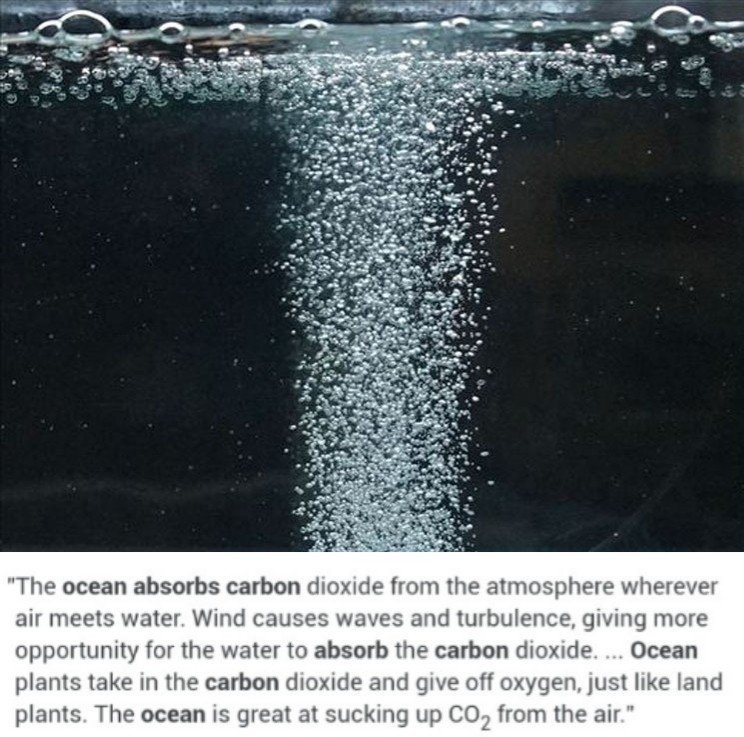






 1917 Code of Canon Law, Canon 185 invalidates (voids) all papacies since October 26, 1958 due to the fact Cardinal Giuseppe Siri was elected Pope on the Third ballot on Oct 26 1958 but the new Pope Gregory XVII was illegally prevented from assuming the office. A Pope was elected on October 26, 1958. Thousands of people witnessed a new Pope being elected by seeing white smoke and millions were informed by Vatican radio broadcasts beginning at 6:00 PM Rome time on October 26, 1958. The papacy of Francis, Benedict, John Paul II, John Paul I, Paul VI, John XXIII and any and all of their respective doctrines, bulls, letter patents and the Second Vatican Council are all invalidated (having no force, binding power, or validity) by Canon 185 because the 1958 conclave of cardinals elected Cardinal Giuseppe Siri Pope on Oct 26 1958. Cardinal Giuseppe Siri accepted the papacy by taking the name Pope Gregory XVII but was illegally prevented from assuming his elected office.. According to Canon 185 Cardinal Angelo Giuseppe Roncalli illegally assumed the papacy 2 days later by fraud and grave fear, unjustly inflicted against Cardinal Giuseppe Siri who was lawfully elected Pope Gregory XVII. Because no Pope has been lawfully elected since October 26, 1958 the Holy See (la Santa Sede/Seat) remains vacant.
1917 Code of Canon Law, Canon 185 invalidates (voids) all papacies since October 26, 1958 due to the fact Cardinal Giuseppe Siri was elected Pope on the Third ballot on Oct 26 1958 but the new Pope Gregory XVII was illegally prevented from assuming the office. A Pope was elected on October 26, 1958. Thousands of people witnessed a new Pope being elected by seeing white smoke and millions were informed by Vatican radio broadcasts beginning at 6:00 PM Rome time on October 26, 1958. The papacy of Francis, Benedict, John Paul II, John Paul I, Paul VI, John XXIII and any and all of their respective doctrines, bulls, letter patents and the Second Vatican Council are all invalidated (having no force, binding power, or validity) by Canon 185 because the 1958 conclave of cardinals elected Cardinal Giuseppe Siri Pope on Oct 26 1958. Cardinal Giuseppe Siri accepted the papacy by taking the name Pope Gregory XVII but was illegally prevented from assuming his elected office.. According to Canon 185 Cardinal Angelo Giuseppe Roncalli illegally assumed the papacy 2 days later by fraud and grave fear, unjustly inflicted against Cardinal Giuseppe Siri who was lawfully elected Pope Gregory XVII. Because no Pope has been lawfully elected since October 26, 1958 the Holy See (la Santa Sede/Seat) remains vacant.
 Hold the Crown (alias for temporal authority of the reigning Pope), the Crown appointed Governor General of Canada David Lloyd Johnston, the Crown's Prime Minister (servant) Stephen Joseph Harper, the Crown's Minister of Justice and Attorney General Peter Gordon MacKay and the Crown's traitorous military RCMP force, accountable for their crimes of treason and high treason against Canada and acts preparatory thereto. The indictment charges that they, on and thereafter the 22nd day of October in the year 2014, at Parliament in the City of Ottawa in the Region of Ontario did, use force and violence, via the staged false flag Exercise Determined Dragon 14, for the purpose of overthrowing and besieging the government of Canada contrary to Section 46 of the Criminal Code. In a society governed by the rule of law, the government and its officials and agents are subject to and held accountable under the law. Sign the online
Hold the Crown (alias for temporal authority of the reigning Pope), the Crown appointed Governor General of Canada David Lloyd Johnston, the Crown's Prime Minister (servant) Stephen Joseph Harper, the Crown's Minister of Justice and Attorney General Peter Gordon MacKay and the Crown's traitorous military RCMP force, accountable for their crimes of treason and high treason against Canada and acts preparatory thereto. The indictment charges that they, on and thereafter the 22nd day of October in the year 2014, at Parliament in the City of Ottawa in the Region of Ontario did, use force and violence, via the staged false flag Exercise Determined Dragon 14, for the purpose of overthrowing and besieging the government of Canada contrary to Section 46 of the Criminal Code. In a society governed by the rule of law, the government and its officials and agents are subject to and held accountable under the law. Sign the online  Two of the most obvious signs of a dictatorship in Canada is traitorous Stephen Harper flying around in a "military aircraft" and using Canadian Special Forces "military" personnel from JTF2 and personnel from the Crown's traitorous martial law "military" RCMP force as his personal bodyguards.
Two of the most obvious signs of a dictatorship in Canada is traitorous Stephen Harper flying around in a "military aircraft" and using Canadian Special Forces "military" personnel from JTF2 and personnel from the Crown's traitorous martial law "military" RCMP force as his personal bodyguards.
















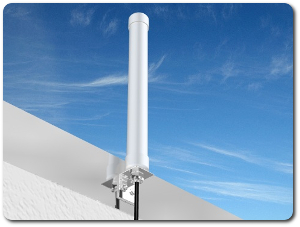
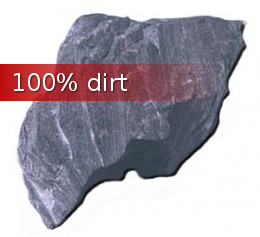



















Picture of bitumen. This is what you are putting in your gas tank – dirt. And you wonder why your engine seized up.
The Alberta tar sands mining operations uses heat to create snake oil from sand and sell it as oil. Millions of barrels of fresh water is heated to make steam and the hot steam softens the carcinogenic bitumen (Polycyclic Aromatic Hydrocarbons (PAH’s) in bitumen causes cancer) and separates the bitumen from the sand. Bituman is not oil. It is a few million years shy from being being oil. It takes at least 10 million years for Earth to create crude oil. Bitumen is tar (Asphaltum), fraudulent being marketed as oil – snake oil.
Image of the familiar oil refinery distillation columns. Oil refineries use heat and pressure to “crack” heavy hydrocarbon molecules into lighter ones. This process is called Catalytic Cracking: breaking down the large molecules of heavy crude oil into smaller gasoline molecules.
Heat can also be used to break down the smaller gasoline molecules into highly volatile (more combustible) gas vapor. It is for this reason that automakers now manufacture their vehicles with plastic fuel lines and plastic fuel tanks. They have replaced the metal fuels lines and metal fuel tanks with plastic in an attempt to prevent you and I from heating the fuel (gasifying it) before it reaches the engine and thereby achieve an increase in fuel efficiency. However, you can replace their plastic lines with metal lines and add a induction heater coil to the replacement metal fuel line or metal fuel filter and gasify the fuel as it passes through. This process converts liquid gasoline in your gas tank into a high fuel mileage gas vapor fuel.
Gasoline is more volatile (more easily gasified – combustible) than diesel fuel, Jet fuel and kerosene because of its base constituents. Volatility (gaseous combustibility) is often controlled (reduced) by blending gasoline with butane (an additive).
Volatility is all about a liquid’s ability to hold itself together — resist gasifying — at a given air pressure. The oil industry and your government knows that liquid gasoline has very low combustibility but as soon as the liquid begins to gasify its volatility increases so they add additives to control the gasification process and the greater fuel efficiency that results from liquid fuel gasification.
Winter-blend (with additives) gasoline will net you the worse fuel economy than summer-blend gas for one reason – lack of heat. Summer heat gasifies liquid gasoline (even gasoline with anti-gasifying additives) and increases gasoline’s volatility and fuel efficiency. Heat causes the liquid fuel to change to a very volatile gaseous state.
In the US, volatility (combustibility) is regulated (controlled) to reduce the efficiency of the hydrocarbons by the use of so-called reformulated gasoline that is less prone to gasification. In Australia, summer petrol volatility limits are set by state governments and vary among states. Most countries simply have a summer and winter blend to control the fuel’s volatility and greater fuel efficiency.
Volatility standards were briefly relaxed during the gasoline shortages in the aftermath of Hurricane Katrina. The US government “permitted” the sale of nonreformulated gasoline in some urban areas, effectively permitting the sale of higher volatility gasoline (more prone to to change to a gaseous state). As mandated by EPA administrator Stephen L. Johnson, this “fuel waiver” was made effective until 15 September 2005. For a very brief period only New Orleans were permitted by the US government to achieve far greater fuel efficiency from their vehicles.
At home, in your baby barn, you could actually produce your own gas vapor fuel using a solar water heater. Instead of heating water you heat liquid gasoline using the free energy of the sun. As the liquid fuel is heated it begins to vaporize. Add a fuel vapor collector tank (shown in the image above in the trunk of a car) to the end of the system and you are on your way to producing your own cheap ultra high mileage gas vapor fuel.
How much does 1 gallon of liquid gasoline displace as a vapor? The saturated vapor volume of an average gallon of liquid gasoline when fully evaporated is 160 gallons of vapor at 60° F and sea level. When you convert (gasify) 1 gallon of gasoline into 160 gallons of highly combustible fuel vapor you increase your fuel supply by 16,000% (16,000% of 1 is 160). If you paid $5 for just one gallon of liquid gasoline you would actually only be paying $0.03 (3 cents) per gallon of fuel vapor.
WARNING – Be very careful if you attempt this as heated liquid fuel, in an enclosed container and system, expands very rapidly. Gas cans are made of plastic because they don’t absorb heat like metal does and they expand with the increase in gas vapor pressure. It isn’t the liquid that expands and causes an explosion it is the gas vapor. If you place a 1 gallon container of liquid gasoline in the hot sunlight the liquid will immediately start gasifying and will naturally convert to it gaseous state – 160 gallons of its gaseous state. Also, gas vapor can kill you very quickly in any confined space. Always make sure your barn has sufficient ventilation.
You could use this system to generate heat and light for your home too. Power a high electrical output portable gas generator off of this type of system and 1 gallon of liquid fuel can provide enough fuel for as much as 160 times longer than it normally does. If your portable gas generator ran for 8 hours you could conceivably run it for 1280 hours or 53 days using gas vapor. Can you image how much money you would save in heating and electrical costs.
Think about this. Your vehicle’s spark plugs usually require voltages in excess of 20,000 volts to fire and ignite the liquid fuel in your vehicle’s engine yet static electricity from your hands, hair and clothing can easily ignite the vapor that comes out from the gasoline in your gas tank. It is for this reason that gas stations around the World have warning signs on their gas pumps that warn of the explosive dangers of static electricity. This fact alone proves that gas vapor is more combustible (easier to ignite) than liquid gasoline.
Here is a little something to help out the people of New York and New Jersey who are still without electrical power – light and heat. There is a fuel shortage and that is compounding their dilemma. To help light your home and provide a little heat too there is another fuel source and you can find it at any grocery store or you might already have it in you kitchen cupboards. This renewable and clean fuel source has fueled the World for thousands of years. It can be burned indoors safely as it produces no toxic fumes nor smoke and a little lasts a very long time – longer than any candle. It is olive oil.
Olive oil has been “grown” every year for thousands of years. Naturally grown oil, like olive oil, has been used to light the World since before the first Egyptian pyramid was built. It was the only oil known to man. It was the only oil used by kings, queens and common people, by Pharaohs and slaves, by the Roman Emperors and every person in their kingdoms.
Olive oil is a greener alternative to toxic petroleum based candles. Olive oil lamps are brighter, non toxic & hypoallergenic. A 99% renewable source which doesn’t give off odors or fumes. Cheap to run, refillable & won’t ignite if knocked over. Oil oil itself won’t ignite. Only the gas vapor that is released from the wick heating ignites.
All you need for an olive oil lamp is a porcelain spoon holder, or a clay dish, or a glass ashtray, or soup dish, and a small piece of 100% cotton cord, lace or any cotton material that can be used as a wick.
What is the simplest way to vaporize (gasify) liquid fuel? Aeration – the process by which air is circulated through, mixed with or dissolved in a liquid or substance. Utilizing extremely small bubbles or drops increases the rate of gas transfer (aeration) due to the higher contact surface area.
How do you aerate liquid gasoline? Using your vehicle’s existing gas tank and fuel sending unit.
Above design by Paul W Kincaid, editor of PRESS Core, frenergy.ca, inventor, CAD designer, developed and marketed the FuelReducer mpg+, FuelReducer Oi, Kincaids Clean Energy Technology and Solutions
How do you aerate liquid gasoline is explained in the PRESS Core article titled: “Exponentially increase your vehicle’s fuel mileage by using only the gas vapor from the top of your gas tank.” http://presscore.ca/ci/2012/?p=5951
Above image is from the Alberta government website – http://www.energy.alberta.ca/OilSands/1719.asp What do you see? Dirt or oil? Sand truck or oil tanker?
Tar sludge is a hazardous waste that is a by-product of the tar cooking process. It is a dark, sticky substance that poses serious threats to human health, environmental standards and worker safety. That is exactly what Canadian oil is – tar sludge. The stripped mined tar sands of Alberta is cooked, using fresh drinking water, to purposely make this very toxic tar sludge. They then refine this very toxic by-product using more toxic solvents to dissolve away the substance of interest – counterfeit oil.
The true test as to whether or not Alberta Tar sand is oil or not is easily demonstrated by the fact that natural petroleum will burn straight from the ground. Alberta Tar Sand will not. Oil tankers and oil platforms can explode with just a small spark. You can spray an Alberta Tar sand strip mine with a flame thrower and it won’t explode. If you smoke on or near an oil rig you can cause a catastrophic explosion and fire. Strip miners at the Alberta Tar sand pits can smoke and even throw their lite cigarette butts on the exposed Alberta Tar Sand and it won’t cause an explosion or instantaneous fire.
The fuel efficiency of all portable gas generators can also be exponentially increased simply by using the gas vapor from the liquid fuel. All portable gas generators wastes a lot of fuel. Liquid fuel is simply sprayed into the cylinders which isn’t a very efficient use of the very expensive fuel. Add the fact that the CO2 output of these generators are much higher than automobiles. You cannot run a gas generator indoors because the levels of CO2 are extremely high and it will kill you in a very short period of time.
Generating gas vapor from liquid fuel drastically lowers the emissions of the portable gas generator. In the process it can potentially increase the fuel efficiency by at least 10 fold. Less fuel will be wasted and the portable gas generators can run a lot longer.
If your gas generator now runs 4 hours on a tank of fuel you could run it for as much as 40 hours using the same amount of liquid fuel.
1 gallon of liquid fuel equals 160 gallons of gas vapor. How long do you think a portable gas generator will run if you feed it only gas vapor? Potentially 160 times longer. If your liquid to gas vapor system runs at full efficiency you could essentially run your gas generator for 640 hours (160:1 x 4) or 26.6 days. Even if you only get 10 times more running time, your fuel costs has decreased by 1000%.